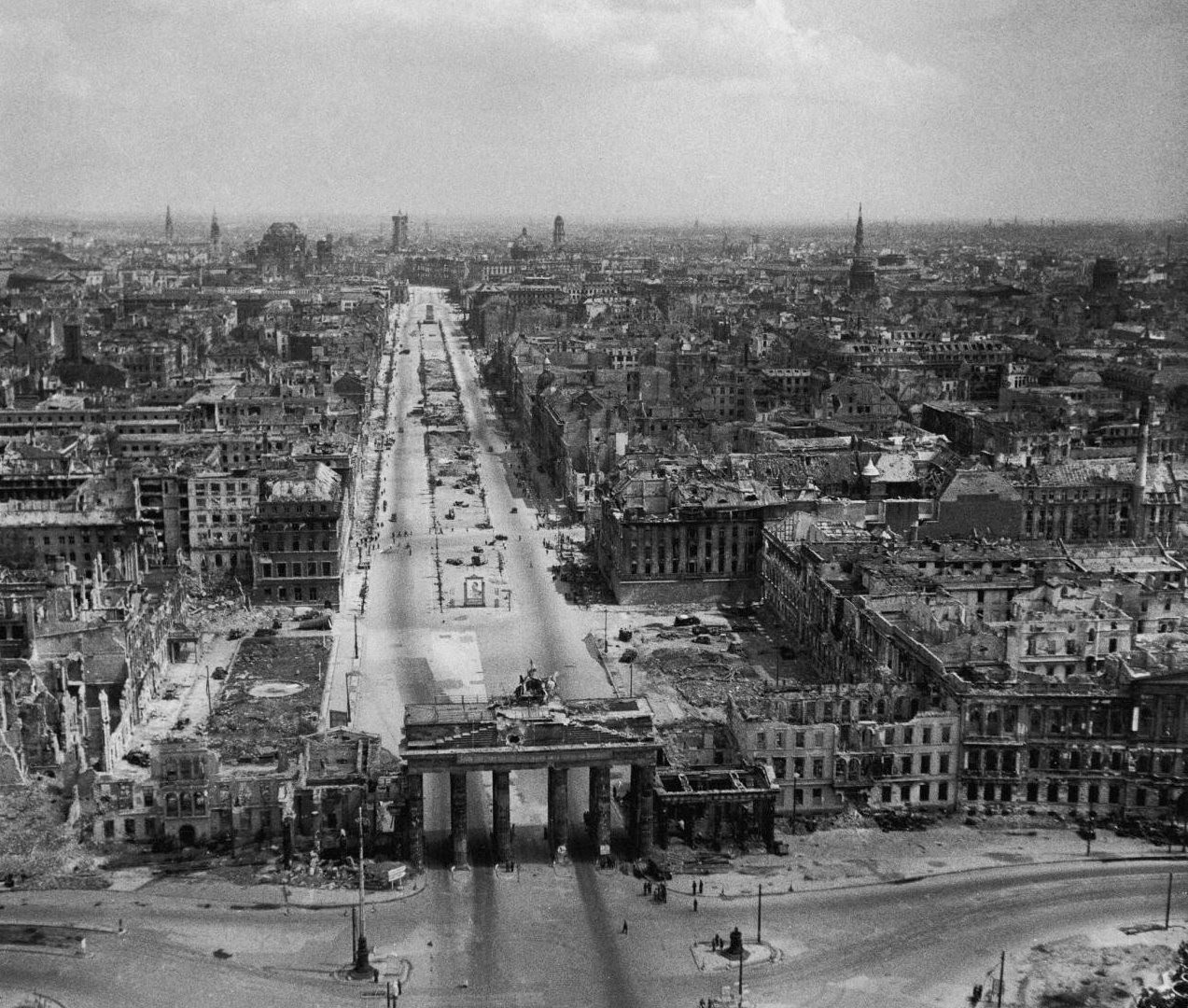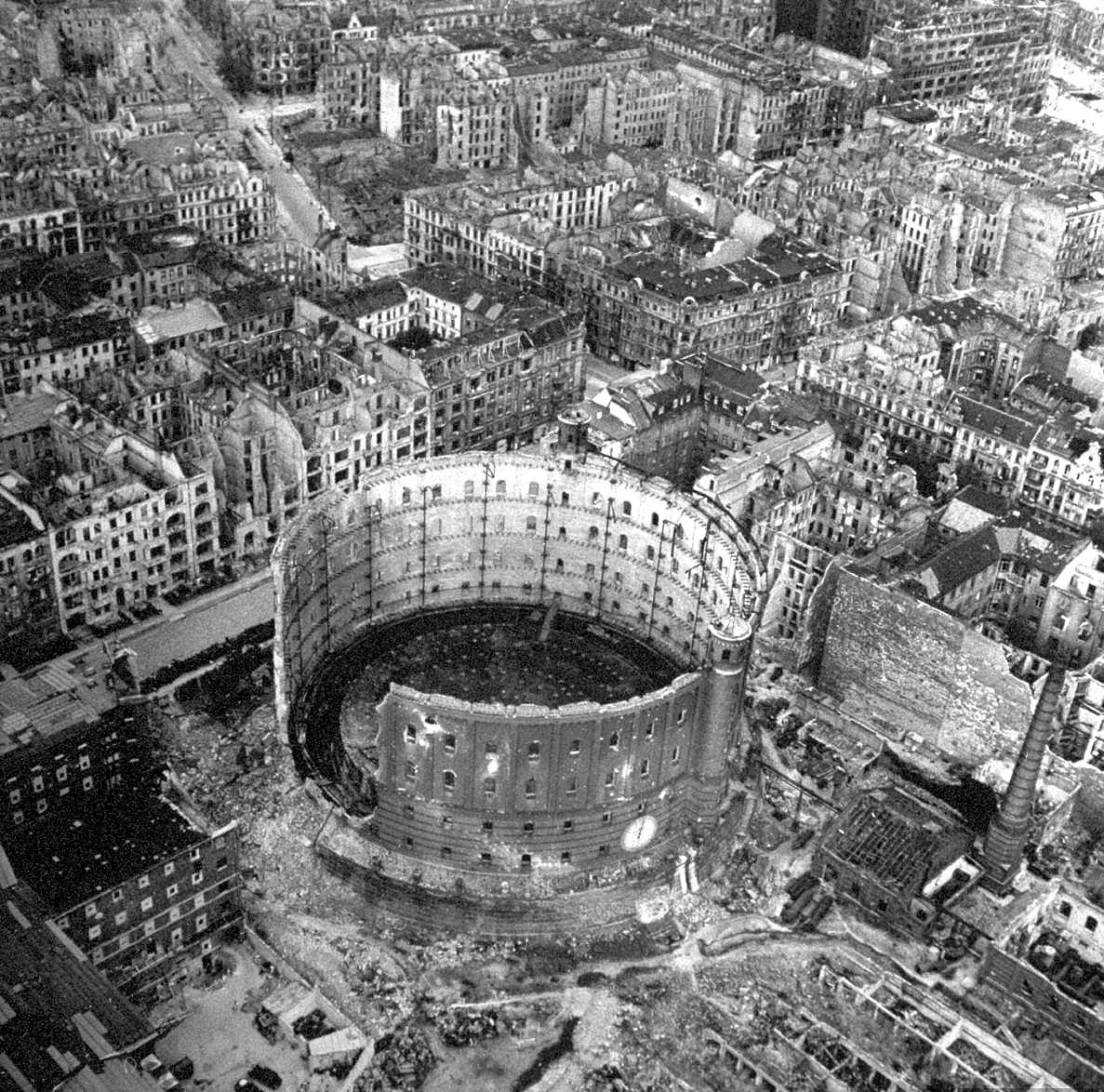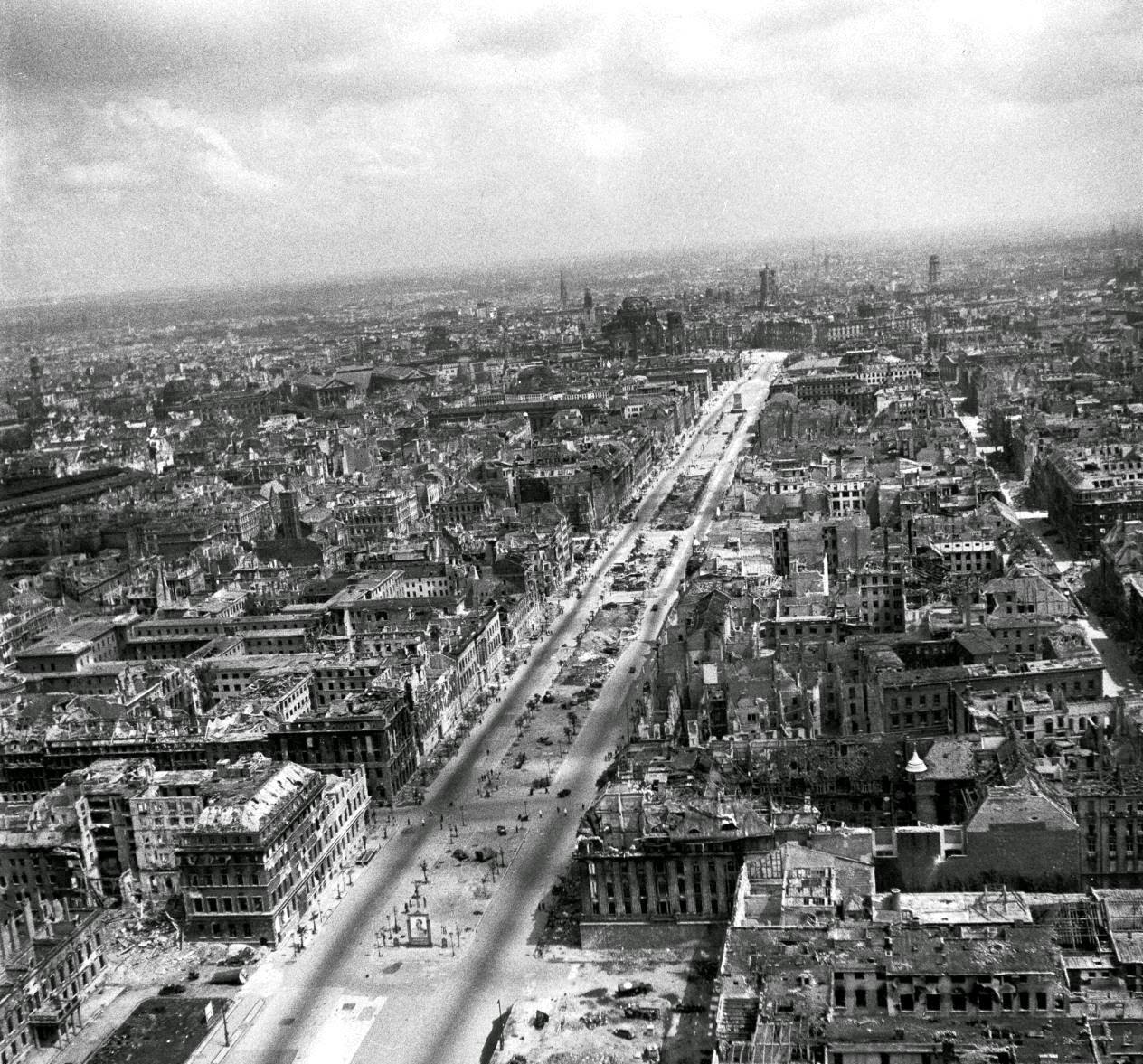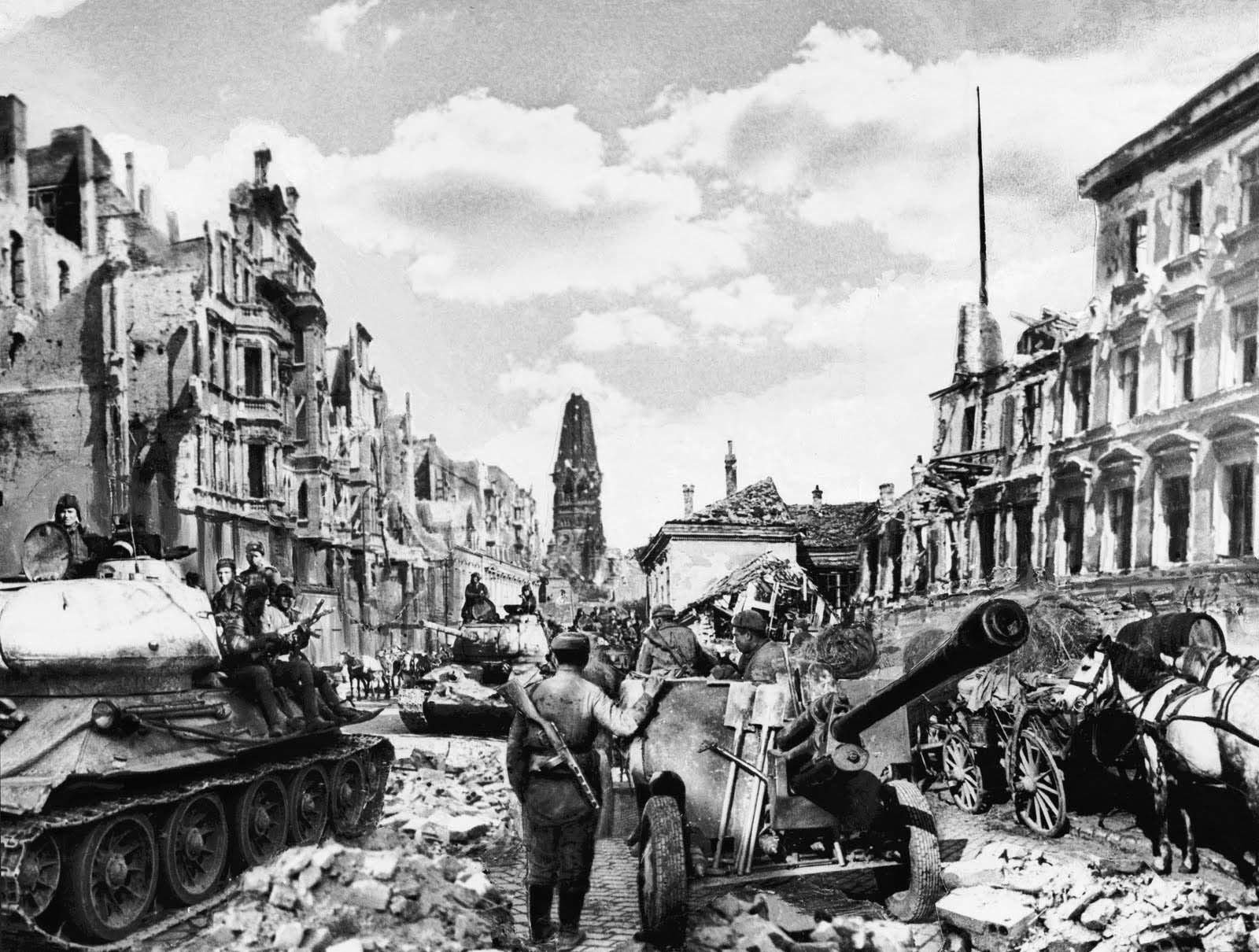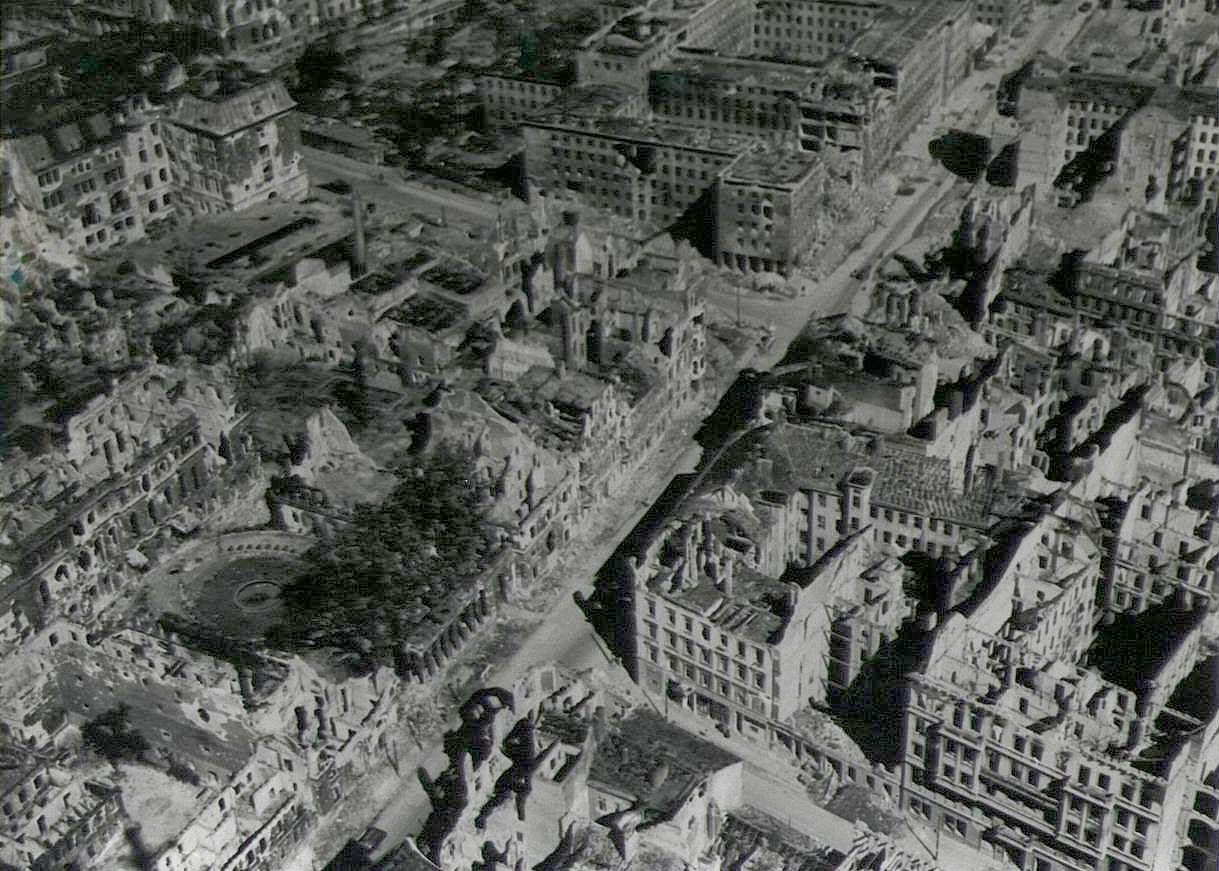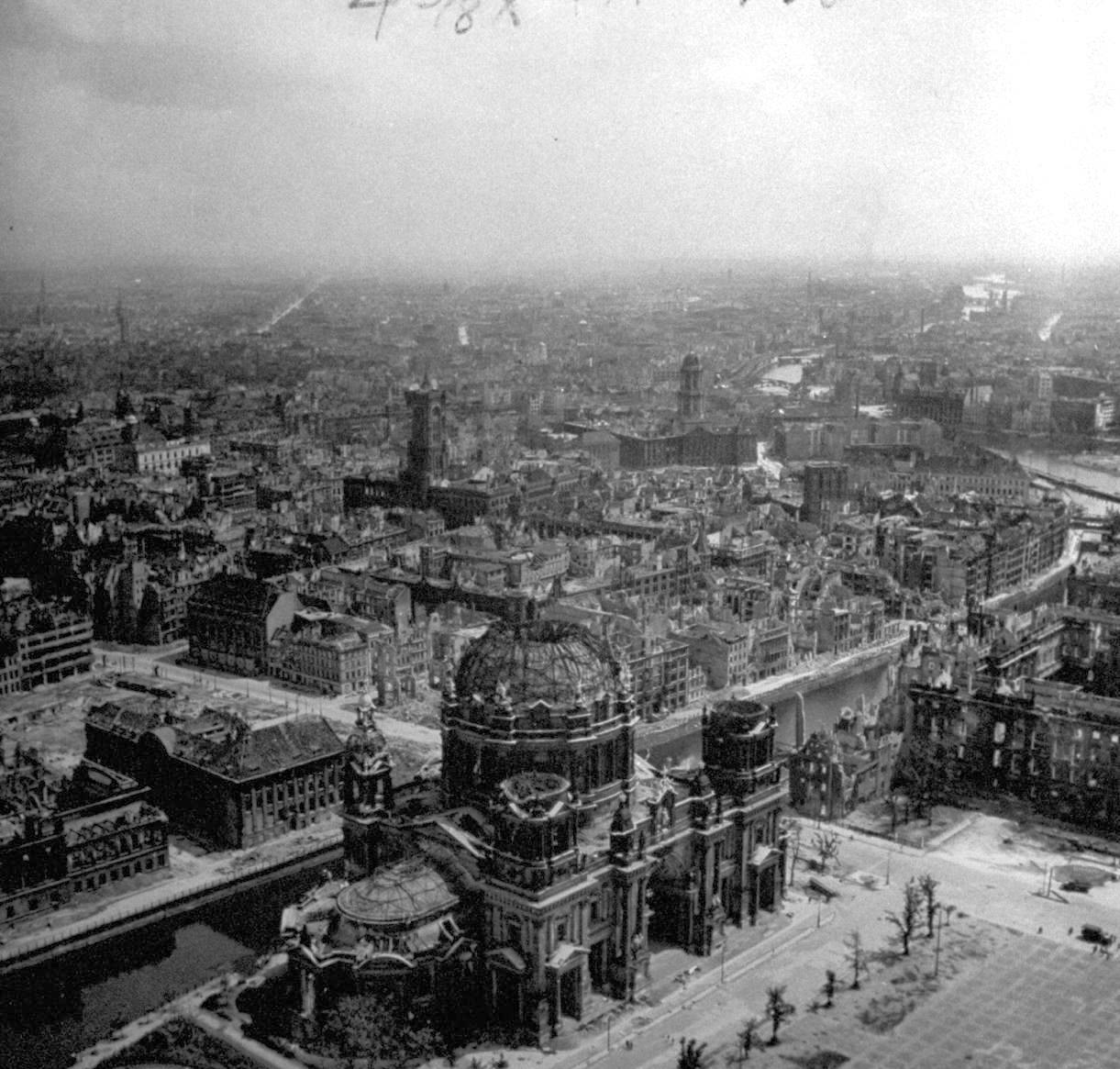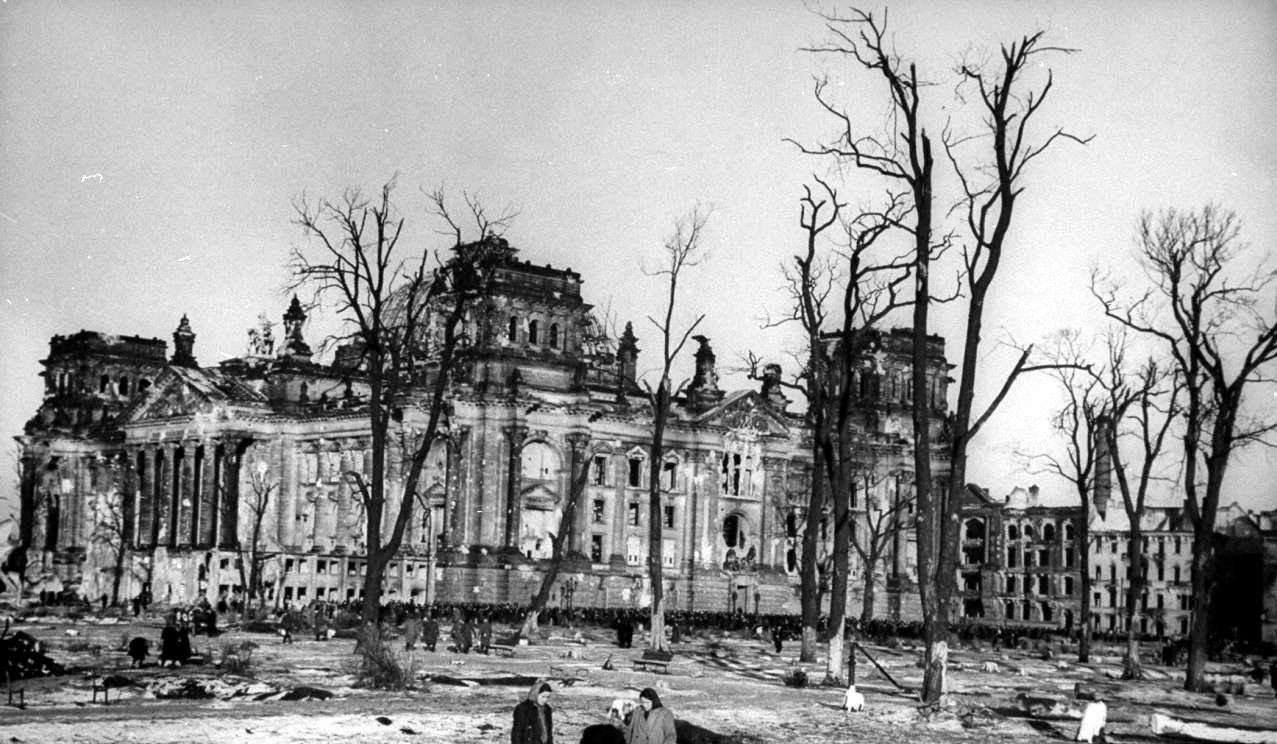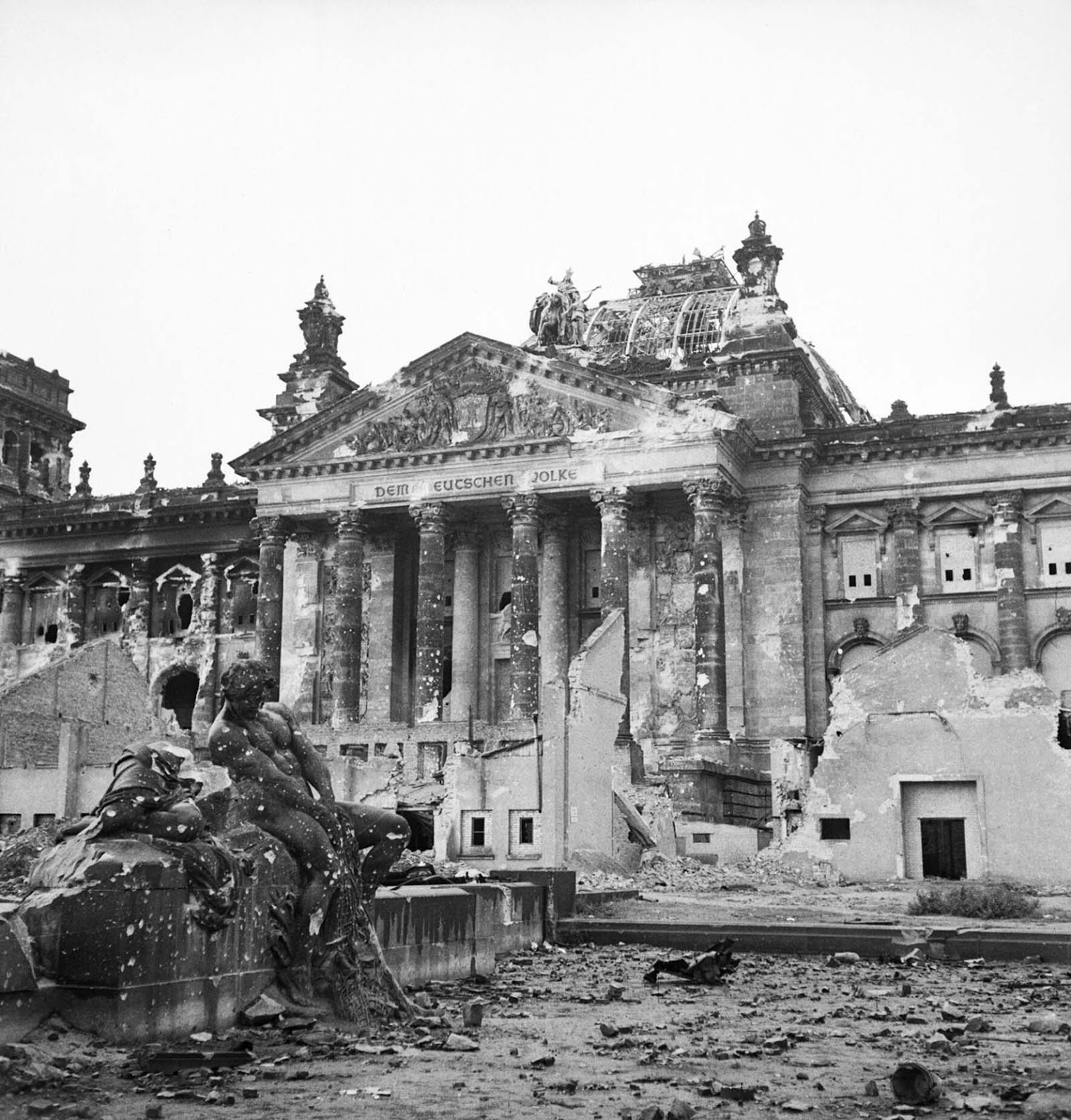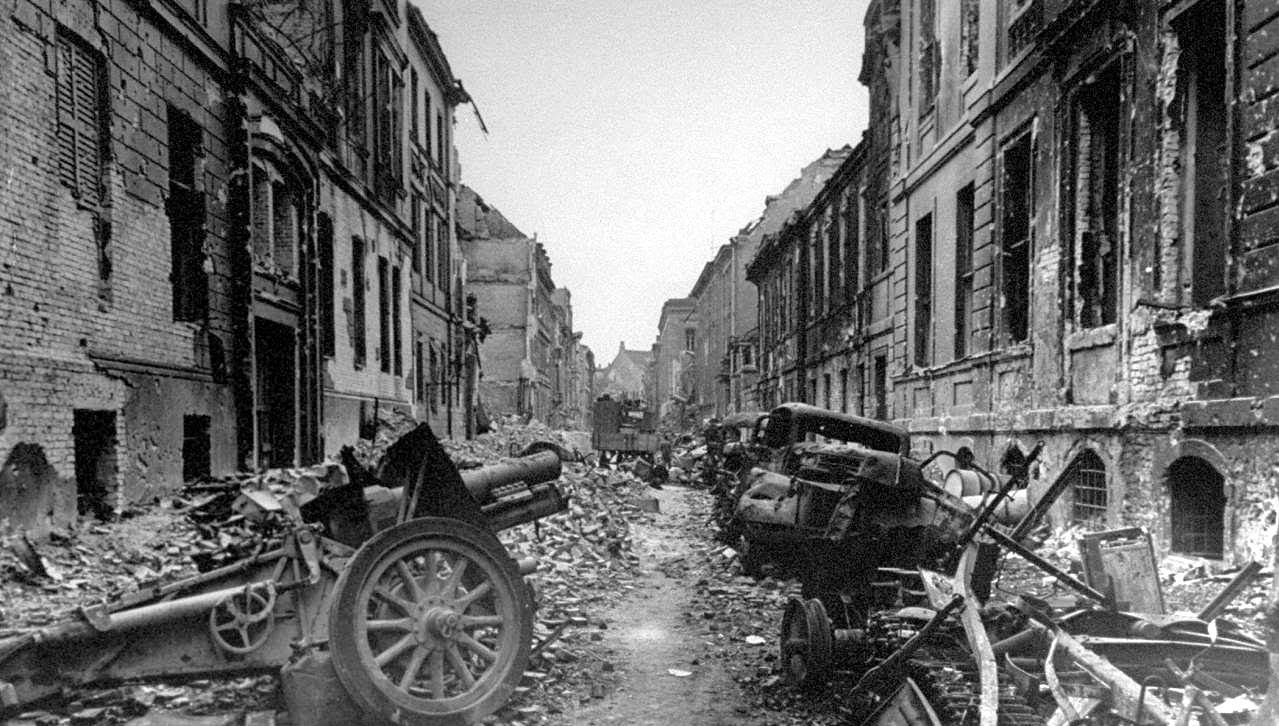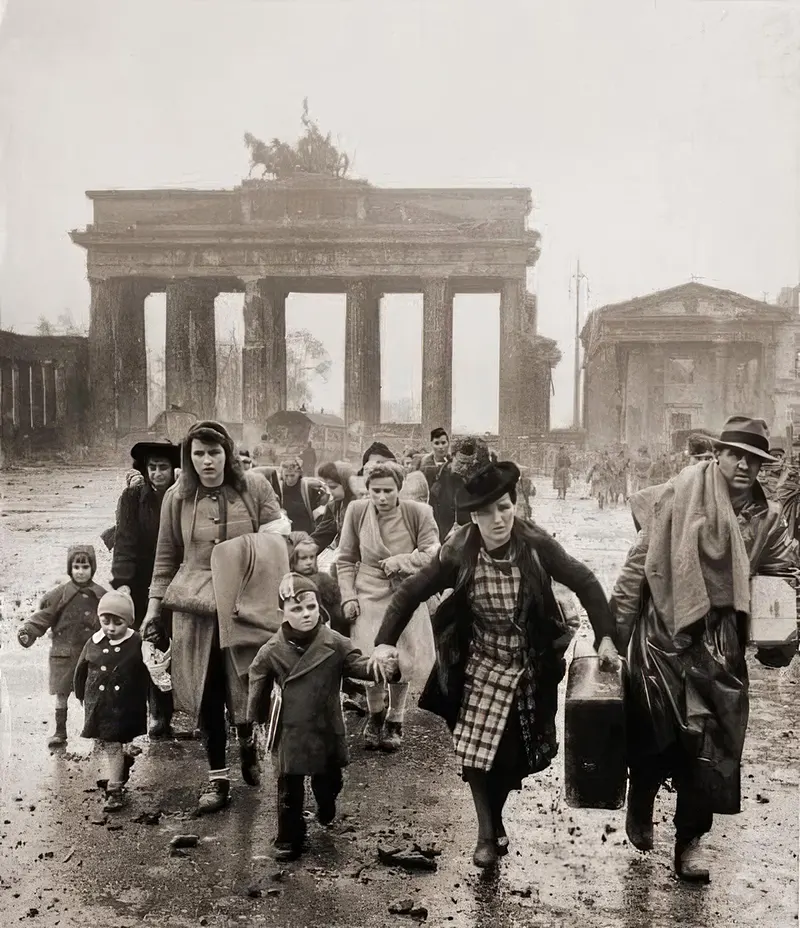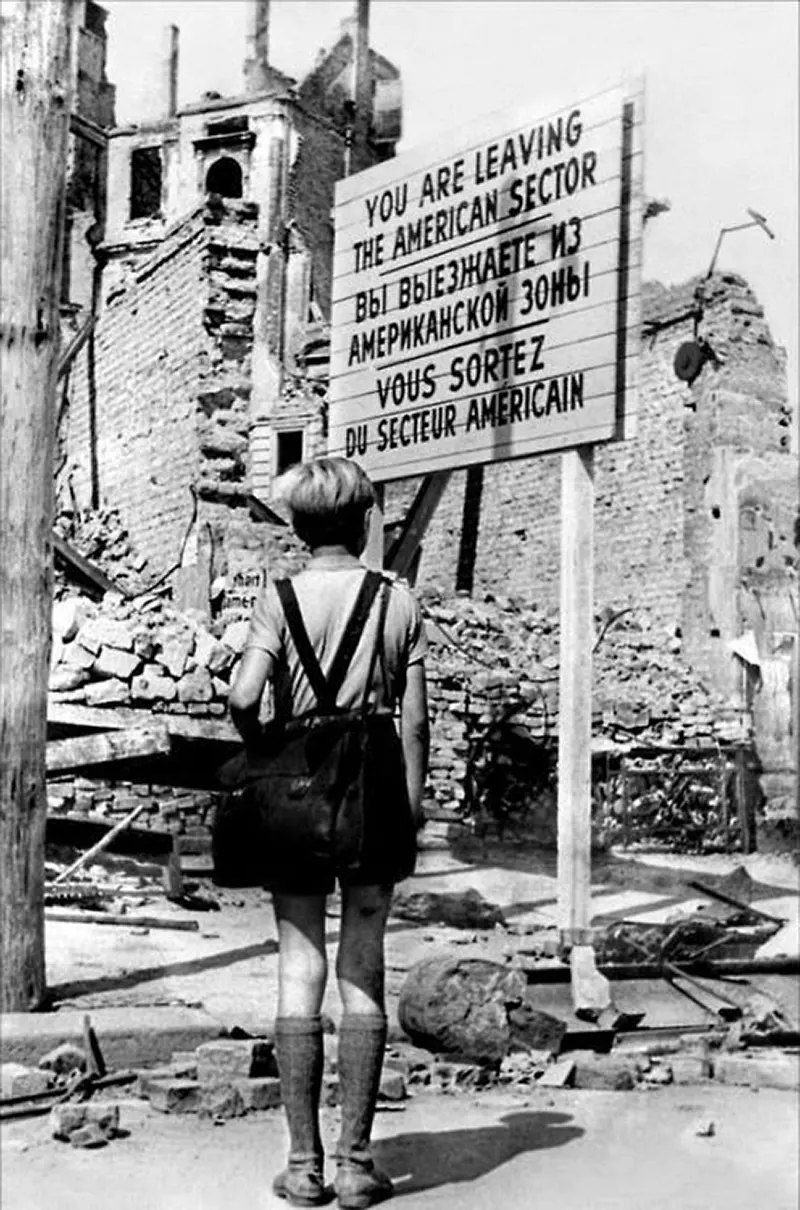Berlin after the War was a post-apocalyptic world. One of the largest and most modern cities in Europe was left a wasteland. There were vast piles of rubble everywhere. Other areas were rows of building walls with collapsed interiors — the skeletons of a destroyed city. The irreplaceable architectural gems of the Schlüter, Knobelsdorf, Schadow, and Schinkel were annihilated. Palaces, museums, churches, monuments, and cultural sites fell victim to the bombs. The city was bombed by the RAF Bomber Command between 1940 and 1945, by the USAAF Eighth Air Force between 1943 and 1945, and the French Armee de l’Air between 1944 and 1945 as part of the Allied campaign of strategic bombing of Germany. It was also attacked by aircraft of the Red Air Force, especially in 1945 as Soviet forces closed on the city. British bombers dropped 45,517 tons of bombs; the Americans dropped 23,000 tons. About a third of the city, especially the inner-city, was in ruins: 600,000 apartments had been destroyed, and only 2.8 million of the city’s original population of 4.5 million still lived in the city. Estimates of the total number of dead in Berlin from air raids range from 20,000 to 50,000. When the Soviets (who were the first occupying power) arrived in Berlin, they saw a city devastated by air raids and street fighting. It was described as a Geisterstadt (“ghost town”). According to Soviet estimations, the clean-up operation would last 12 years. On May 29, all women aged between 15 and 65 were conscripted as Trümmerfrauen (rubble women). In all, 60,000 women worked to rebuild Berlin. The biggest problem that the Berliners had to face was the threat of starvation. German war-time ration cards were no longer valid. Any remaining rations were either used to feed Russian troops or stolen by hungry Germans. On May 15, the Russians introduced a new five-tier ration-card system: The highest tier was reserved for intellectuals and artists; rubble women and Schwerarbeiter (manual workers) received the second-tier card, which was more valuable to them than the 12 Reichsmark they received for cleaning up a thousand bricks. The lowest card, nicknamed the Friedhofskarte (cemetery ticket) was issued to housewives and the elderly. During this period, the average Berliner was around 6 to 9 kg (13 to 20 lb) underweight.
(Photo credit: Library of Congress / Bundesarchiv / Wikimedia Commons). Notify me of new posts by email.
Δ Subscribe
